When Johnny put himself into the River Oaks Hospital in New Orleans for heroin addiction in June 1971, celebrities didn’t get treatment for alcohol and drug addiction and rehab facilities catering to them didn’t exist.
One music magazine reporting Johnny’s hiatus from touring referred to him as a “frail Texas albino bluesman-turned-rock-superstar-turned-mental-hospital-inmate.” But Johnny saw what drugs had done to his lover Janis Joplin and his friend Jimi Hendrix, and “went for help because I didn’t want to die.”
He kicked heroin cold turkey and suffered through three months of physical withdrawal and another three months of psychological withdrawal. “The mental part was the worst part,” he said. “When you’re tryin’ to get off of heroin, it messes with your head. It’s horrible, just horrible.” Not being able to play guitar was extremely difficult, so as soon as he earned passes to leave the hospital, he sat in with a rock band named Thunderhead. The friendships forged during that dark period of his life led to musical collaborations with guitarist Pat Rush and drummer Bobby T (Torello) who became a lifelong friend.
Johnny’s resolve to stay away from heroin led to an increase in his drinking, which he tried to curtail by drinking liquor that he didn’t like. “I drank a lot of nasty-tasting things because I figured I wouldn’t drink so much. I drank bourbon and grapefruit juice. That must have been the worse possible combination and I still drank a lot of it. Scotch is nasty tasting too.”
In fact, a wild night in the French Quarter when Rush and Johnny attempted to sit in with a band was a result of drinking copious amounts of Chivas Regal scotch.
“We sat at a table at The Ivanhoe and Johnny leaned over and said, ‘Pat, promise me that you won’t let me get me get up and play. I’m too drunk − I can’t stand up,’” Rush recalls. “We’re in there five minutes, and the band says, ‘We see Johnny Winter, let’s get him up to play a song!’ Johnny stands up, ‘Yeah!’ I pull him back in the chair and say, ‘Johnny, no. You made me promise. You’re too drunk, you can’t stand up, don’t do it.’ He said, ‘Come on, Pat, just one song. I’ll sit on a stool and sing and you play guitar.’ So we got up and he sat on a stool. He had his top hat on and his fringed jacket. He leaned back to hit this note and the stool fell backwards, he fell into the drums and knocked them over on top of the drummer. That was pretty much the end of the song. I had to pick him up off the floor and out of the place − it was hilarious.”
When I first interviewed Johnny by phone in 1984, he had just released Guitar Slinger on Alligator Records and celebrated his 40th birthday by getting the Screamin’ Demon tattoo on his chest. Impressed by his honesty, affinity for storytelling, philosophical approach to life and self-effacing sense of humour, I set up another interview for a Johnny Winter special on my WCCC radio show in Hartford so I could meet him in his tour bus after the show.
Smoking his trademark Kool and sipping on a glass of vodka in the back of the bus, he pulled out a small velvet sack and proudly displayed the last remaining slide from a 12-foot piece of tubing he bought at a plumbing-supply store in 1965. When I asked him about how he’d practised his scream by yelling into a pillow as a kid, he grabbed a small brown pillow off the seat and screamed into it. He was such a charming, larger-than-life character; I felt I wanted to know more about him.
Johnny’s life story had all the ups and downs and twists and turns of great literature and, in 1985, I approached his manager Teddy Slatus about writing his biography. But Slatus said Johnny was still young and they wanted to wait until he won a Grammy. I kept asking and he kept turning me down, but I never abandoned my quest. I was determined to tell Johnny’s story with his input during his lifetime, rather than leave it to biographers forced to rely on the often self-serving memories of peripheral players after he was gone. As I always say, “Everybody has a Johnny Winter story and some of them are even true.”
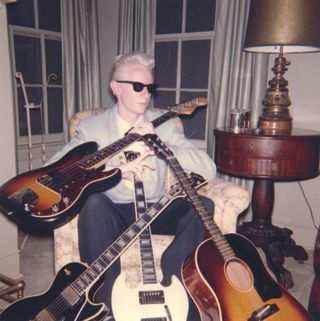
It was on the day before September 11, 2001 that Slatus and I finally entered into a handshake agreement (actually he kissed my hand) to make me Johnny’s biographer. It took another 15 months before Slatus made it official. He said he had talked to other writers, but chose me because “You have heart and you really care about Johnny.”
When I began interviewing Johnny on Saturday nights in his home in January 2003, he stood up when I entered the room like a true Southern gentleman. It was difficult to tell which one of us was more nervous, so I made small talk with his wife Susan, telling her I had seen a great photo of her with Johnny and Muddy on Muddy Waters’ website. I printed and framed it for my next visit, but her reaction wasn’t what I had expected. “That’s not me,” she said, handing the photo back and giving Johnny a dirty look. To her credit, she said it wasn’t my fault and that it had been a sweet gesture. I didn’t know what to do after she gave him another dirty look and stormed out of the room. So I set up my tape recorder on the couch next to Johnny, sat down at the other end, and said I was sorry. “Yeah, that was a drag,” he said in his inimitable Southern drawl. When I asked if he forgave me, he smiled and said yes, and I began the interview.
It took time to develop a friendship with Johnny; at first I was just another journalist asking questions. I knew we’d never develop a bond if our conversations were one-sided and my visits ended when I shut off the recorder. I had a long, late-night drive home and drank water during our interviews while he drank Absolut vodka on the rocks and chain-smoked Kools. I didn’t think my teetotaling ways would help break the ice between us, so when we talked about the Johnny Winter And album, I shared my own experiences with “Cheap Tequila,” which made him see me in a new light. I knew he always had multiple women so I brought a friend backstage at one of his shows and introduced him as “my other boyfriend.” The big grin on Johnny’s face told me I was speaking his language.
Once I started hanging out after our interviews and talking to him like a friend, Johnny proudly showed me his extensive record collection in a custom-made cabinet that took up a wall of his living room. His collection included hundreds of vintage blues albums, Alan Lomax’s field recordings, and Firesign Theater comedy albums from the 1970s. When he said he couldn’t listen to them because he didn’t have a turntable, it really bothered me. Johnny was legally blind, had a hip injury that made it difficult for him to get around, but he couldn’t pass the time listening to his favourite blues artists? It was unconscionable.
Determined to help my new friend, I bought him a turntable but left it in my car until we finished our interview the following week. When I told him I had an Easter gift for him, he figured it was a chocolate bunny (he loved chocolate). When he looked in the box and saw the turntable, he got so excited that he reminded me of a little kid at Christmas. Trying to put the belt on the spindle was like the blind (literally) leading the blind, so I promised to return with a friend to hook it up the next day.
Johnny is a creature of routine, and one of his routines was his refusal to do interviews before 9pm. After he recorded Guitar Slinger for Alligator records, the label set up a phone interview with Japanese Guitar Player magazine. But the writer calculated the time zone differential incorrectly and called at the end of the two-hour block of time. Johnny sat by his phone and listened as the writer left a message on his answering machine but didn’t pick up because he wasn’t calling at the right time.
But, in this case, Johnny wanted me to come back as early as possible. When we returned the next day, his custom box of carefully indexed 45s was ready. He played Okie Dokie Stomp by Clarence “Gatemouth” Brown and my requests: School Day Blues and You Know I Love You from his first record, and Birds Can’t Row Boats, which he called “a song makin’ fun of Bob Dylan.” That’s how I discovered his food routine – when he abruptly said, “Susan, get my sandwiches,” and I knew we had to leave.
“There’s something about food and Johnny that happens with everybody,” Mark Epstein, one of Johnny’s bass players, later told me with a laugh. “You call Johnny up after six months, you have this great conversation and halfway through some sentence, he says, ‘I gotta eat dinner, got to go, bye.’ Click. It could be the end of the world, it could be the Pope; everything stops. He had a schedule and it had to be adhered to.”
Johnny, however, was so overjoyed to be able to listen to his records, he decided our interviews could start at 8pm.
Another facet of Johnny’s schedule was watching The Simpsons TV show every night at 7pm. Johnny became a fan after he and his brother Edgar were featured in the 1997 Simpsons Halloween Special. Weekly band rehearsals and even the rehearsal with producer Dick Shurman for Johnny’s I’m a Bluesman CD had to end by 7pm. So when I saw a pair of bright yellow fuzzy Homer Simpson slippers with bulging white eyes, I couldn’t resist. Johnny surprised and charmed me the next week when he answered his front door wearing those slippers. He still had them on at the end of the night when he played me his fiery rendition of B.B. King’s It’s My Own Fault on the Fillmore East Mike Bloomfield, Al Kooper: The Lost Concert Tapes 12-13-68 CD that had just been released. What a sweetheart.
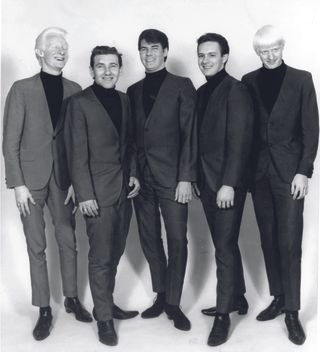
A guitar-player friend who had toured with Debbie Davis asked if Johnny wore clothes when I interviewed him. I thought that was an odd question, but mentioned it to Johnny the next week. He laughed, said he didn’t usually wear clothes around the house, and told me a story about getting into trouble for reciting the Pledge of Allegiance naked at summer camp as a kid. When I thanked him for wearing clothes during my visits, he smiled and said “You’re welcome.” But I knew better than to ask him about the tattoo on his thigh when we talked about his body art.
Despite Johnny’s well-publicised wild and crazy side, he also had a sweetness and a childlike nature. I’ll never forget the night he brought me upstairs to the room where he kept his awards, hats, music books, and music memorabilia. His gold record for Johnny Winter And Live; framed Grammy certificates for producing Muddy Waters recordings Hard Again, I’m Ready, and Muddy “Mississippi” Waters Live; and Grammy nominations for Johnny’s Alligator recordings – Guitar Slinger and Serious Business – were proudly displayed on the wall. An award for more than 100,000 sales in the UK for John Lee Hooker’s 1991 release Mr Lucky was hanging beside his other awards, but he still hadn’t hung the Grammy nominations for his Pointblank recordings – Let Me In and Hey, Where’s Your Brother? He was so proud and unassuming that it reminded me of being 11 years old and having your best friend show you the treasures in his bedroom.
I was told that reading the story of his own life was so emotional that tears were streaming down Johnny’s face when he finished the manuscript of Raisin’ Cain – The Wild and Raucous Story of Johnny Winter. But he was all smiles when I stopped by his house for him to provide the foreword. You deserve a big kiss, he said, before he got up out of his chair, walked across the room and kissed me. I knew then he loved it because Johnny didn’t get up out of his chair and walk across the room for anybody.
I still find it difficult to believe he’s gone. But I’m grateful for his friendship, his music, and the opportunity to capture his life story in his own words during our much too brief time together.
Johnny’s story began in Beaumont, Texas on February 23, 1944, where he was born with albinism which rendered him legally blind with no pigment in his hair and skin. With 20⁄400 eyesight in one eye and 20⁄600 in the other, Johnny had problems seeing tests and assignments on the blackboard and fitting in with his classmates.
“Kids teased me in school for being albino,” Johnny said. “They called me ‘Cotton’ and ‘Whitey.’ A little kid in our neighbourhood ran around saying, ‘You’re an albino. You’re an albino.’ I had never heard that word before, but when I asked my parents about it, they said, ‘Yes, you are an albino.’ It was really bad to find out about it in that way – to hear it from a neighbourhood kid bothering me about it.”
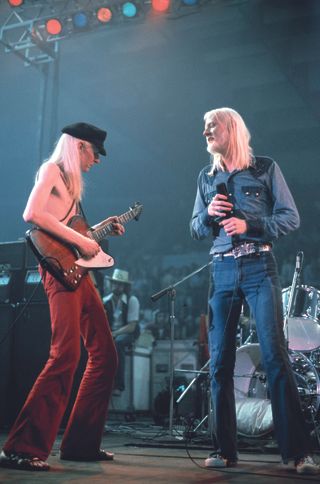
In 1959, a teenage Johnny played Johnny B. Goode at the Johnny Melody Contest at a Beaumont movie theatre to accompany the release of the movie Go, Johnny, Go. He won a session at Bill Hall’s Gulf Coast Recording Studio in Beaumont and a record deal for a single at Dart Records, but his victory was marred by the audience’s laughter when he walked out on the stage.
Johnny was a sensitive child who wasn’t immune to the pain that came from being different. Having to endure the cruel taunts for being albino, he felt a kinship with black blues artists. “We both had a problem with our skin being the wrong colour,” he said.
Although Johnny initially heard homogenised versions of the blues deemed suitable for white audiences, Lilly, his great-grandfather’s maid, introduced him to raw, earthy sounds of blues by black artists. “Lilly had the radio on all the time and listened to KJET in the kitchen – it was the only black station in Beaumont,” Johnny said. “I was about 10 or 11 and that was the first time I heard blues. It was real raw – completely different from the music my parents and grandparents listened to. I started listenin’ to blues on KJET because I liked what I heard in the kitchen.”
Once Johnny discovered authentic blues, he became insatiable. KJET went off the air at 6pm, so he began searching for late-night blues stations. Nocturnal by nature, Johnny always had what one of his sidemen called “a vampire schedule,” staying up all night, going to bed at 6 or 7am, and sleeping late into the afternoon. His natural biorhythm as a night person allowed him to indulge his love of the blues.
Johnny listened to WLAC in Nashville, Tennessee, KWKH in Shreveport, Louisiana, and XERF in Del Rio, Mexico and began buying mail-order records from the record shops that sponsored the late-night blues shows. When he discovered record stores in Beaumont, he used his allowance and lunch money to buy 45s.
“The record stores had little record players where you could listen to ’em, and I liked everything,” said Johnny. “I bought every blues record I could find. It made my style broader because I literally bought everybody I could find so I didn’t sound like just one person. I’d practice six or eight hours a day in my room after school, and played so many different styles that they turned into my style.”
Johnny’s first band – Johnny and the Jammers – played school dances and Tom’s Fish Camp, a raucous backwoods club next to a swamp. A 15-year-old perfectionist, he didn’t think his friend Dennis Drugan was a good musician, so assigned him to “silent guitar” (hooked up to an amp without any volume) and was especially tough on his brother Edgar who played a Wurlitzer keyboard.
“If he didn’t like the notes you played, he’d turn around and give you a dirty look,” said Drugan. “If Edgar did something he didn’t like, Johnny would give him a whack with his guitar. Edgar, who was 12, would say, ‘I’m gonna tell Momma on you.’”
Johnny’s belief in himself and in his ability to do whatever he wanted to do made him fearless. He never let his limited eyesight deter him from riding his “real fancy red bike with chrome fenders” around his neighbourhood, to school, or to his grandparents’ house. He drove his sax player’s car on the wrong side of the road so he could see the curb, and drove a moped in New York City until the law required a driver’s licence.
That fearlessness also led him to the black blues clubs in Beaumont, which was segregated when he was growing up. Johnny, Edgar and his friends went to the Raven Club to see shows by Bobby “Blue” Bland, Little Junior Parker, Al “TNT” Braggs and B.B. King.
“I was about 15 or 16 when I first went to the Raven Club,” Johnny said. “We were the only white people there, and a little bit scared but we pretended not to be. I was 16 the night I sat in with B.B. – that was a great night. It was a completely black audience. I wanted him to hear me, but he didn’t want to let me sit in.
“He didn’t know if I was any good or not. First he asked to see my union card. When I showed it to him, he was surprised I had a union card. I said, ‘Please, let me sit in, Mr. King; I know your songs,’ and he finally let me play. I played Goin’ Down Slow on his guitar Lucille. He just let me sit in for the one song and took his guitar back.
“He had three horns, a drum, bass, guitar and organ; it was the first time I played with such a big band. I got a standing ovation, and that surprised him. He said, ‘I’ll be seeing you down the line; you were great.’ That made me feel great. It meant so much to me to have a great bluesman, somebody who I always idolised, encourage me. I always knew I wanted to be famous and that was great − it made me feel like I can do this and have people like me.”
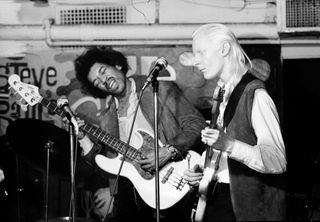
Johnny’s fearlessness served him well when he played Southern juke joints, where drunken rednecks threw drinks at the musicians, and club owners put up chicken wire to keep the bottles from hitting the stage. He played those clubs with a blues power trio that included bassist Tommy Shannon and drummer Uncle John Turner. True children of the Age of Aquarius, they travelled in a Packard hearse, experimented with psychedelics, and wore outrageous clothes.
“Back in the 60s and early 70s, everybody was doin’ drugs − psychedelics mostly − cocaine and heroin was later,” said Johnny. “LSD and mescaline; I pretty much did everything. With acid, you never knew what it was and it got to be more speed than anything else. I hated speed. I liked mescaline and psilocybin (mushrooms); they seemed to give you a nice high without makin’ you too nervous or jittery like speed did.”
The band bought their clothes in what Turner called “a pseudo hippie joint in Houston”. “We were pretty vain back then,” remembers Shannon, who later played with Stevie Ray Vaughan. “We’d wear whatever we could find that was really cool. I had a purple velvet Nehru shirt.” Their outlandish outfits, as well as their long hair, made them prime targets.
“I knocked down a guy in Dallas in a club called Phantasmagoria,” said Johnny with a grin. “He was comin’ out with all this anti-long-hair stuff and I hit him and knocked him down with my fist. When he finally got up, the guy behind the bar had a big stick, and told him, ‘Get out and don’t come back.’”
When Johnny replaced his black Les Paul Custom with a white 1963 Les Paul with an SG body, he quickly discovered it would come in handy for more than music.
“I used my white Les Paul to hit people,” said Johnny with a laugh. “There was this big guy in a club in Galveston. He was built like a football player and wanted the same song over and over again. When I said ‘No,’ he said, ‘I’m gonna wipe out the band stand.’ He backed up and got ready to rush the stage and I wiped him out with my guitar before he could get the drums. He went down and he didn’t get up. My guitar had a bent head stock but I could still play it.”
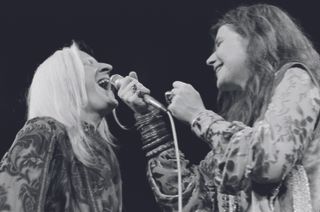
After signing with New York entrepreneur Steve Paul, who catapulted him into the international spotlight almost overnight, Johnny continued to develop his yen for alcohol as well as drugs. He played Woodstock and dozens of music festivals across the US, the Bath Festival, the Isle of Wight Festival, and concerts at high-profile venues, including the Royal Albert Hall, Fillmore, Fillmore East, Hollywood Bowl and the Spectrum in Philadelphia.
When Johnny played the Spectrum in 1969, the band had dropped what Turner called “the strongest LSD we had ever had.” They already knew they were too high to play when they walked in and saw the opening act – an unknown band named Led Zeppelin – playing on a revolving stage. Between the acid, the changing colours of the spotlights and the moving stage, the band became totally disoriented. “When the show ended, the back of the stage was facing the front row of the audience, but we were way too high to realise this,” said Turner. “Johnny thinks he’s getting off the stage to go back to the dressing room and he jumped off the stage into the front row. He had to be pulled back by the roadies because the crowd jumped on him and was going to consume him.”
“It was horrible,” said Johnny. “It was like being on a sonic merry-go-round. I’d walk away from the mike, not remember where it was, and couldn’t find it. I wouldn’t play any revolving stages after that.”
With Johnny playing a breakneck schedule of gigs and festivals throughout Europe and the States, he needed drugs and alcohol to unwind. He was popping Seconal and drinking a fifth of Jack Daniel’s a night, and his drug and alcohol use escalated with his fame.
Johnny was quite inebriated when he ran into Mick Jagger and Keith Richards, whose rehearsal space at SIR in New York was adjacent to Johnny’s. “I talked to Mick about producing Muddy,” said Johnny with a laugh. “I got real drunk and obnoxious and was slapping him on the back and being a real asshole. Hittin’ Mick on the back just for fun and almost knocked him over. I was terrible − really obnoxious. He took it pretty good.”
When Susan couldn’t get a drunken Johnny out of the bathroom, she called on Jagger and Richards for help. “They carried him out and helped me get him into a cab,” remembers Susan.
Johnny met Susan when she working for his manager Steve Paul and he flew back to New York after getting out of rehab. Within three months, they were living together. Johnny knew he was in love and invited Susan to join the band on the Still Alive And Well coliseum tour. “That was kinda silly,” he said with a laugh. “It was worse than Paul and Linda McCartney.” After six months on the road, Susan decided to stay in New York when Johnny was touring. They enjoyed their private time together, but having Johnny leave to go back on the road bothered Susan a lot more than it bothered him. “I didn’t mind goin’ on the road ‘cause I got to be with somebody else,” he said. “I wasn’t used to being true to one person. It was something I knew I couldn’t do and I told her that. She put up with that for a long time.”
Johnny always had multiple girlfriends but he told them outright that he couldn’t be true to one person. But Susan finally had enough of it. She told him if he didn’t marry her and get rid of the girlfriend he had set up in a high-rise apartment in Houston (the woman in the photo), she would leave. They were married in 1993 and had been together for 42 years when he died in July.

From the time he was a child in Beaumont, Johnny always believed he’d be successful musician. When I asked whether it was fate or free will that brought him success, he pondered the question before answering. “I think that you have a lot to do with your fate,” he said. “You can’t say its fate and leave it up to that; you’ve got to work out your own fate. Everything I wanted, I always got. I feel like it was something that I had to keep working at, but I knew I was going to be successful. I was determined to get what I wanted and knew I would eventually. It didn’t surprise me when it happened; I just was surprised it took so long.”
Johnny’s only regret was firing Turner and Shannon because his manager told him he had to play rock ’n’ roll to continue to be successful. Having to fire friends who had been with him from the beginning, and had lived like paupers so that the band could fulfill their dream of playing blues, wasn’t easy.
“I loved them,” said Johnny. “They had helped me make it, man. When we were really trying and nowhere, they were still there with me. I told them I loved them and I hated to do it but I needed a band that could play more rock ’n’ roll. I didn’t want to be a nobody; I didn’t want to be another Ultimate Spinach because Ultimate Spinach was a perfect example of a band that had one record and nothing else.”
Johnny released four studio albums and three live albums as a rock ’n’ roller; they included Johnny Winter And Live, his only gold record. Some fans look back longingly at his fiery licks and flamboyant performances during his rock years, especially when he played with Rick Derringer. Yet, as amazing as those albums and shows may have been, Johnny always had a love/hate relationship with rock ’n’ roll.
During his 74-75 US tour, he played stadiums that held 50,000 to 75,000 people. His band traveled in a private jet with John Dawson Winter painted on the nose, and was greeted by limousines when they landed in private airports.
The band was at the peak of its power when the tour ended in late September 1975 and the promoters were ecstatic. But Johnny had played rock long enough. When he got the call to produce Muddy Waters (see page 43), he returned to his beloved blues and never looked back. His musicians were completely surprised when he called a rehearsal and told them that he’d decided to call it quits.
“It was over very quick,” said Floyd Radford, his second guitarist on that tour. “I don’t understand why Johnny did it that way, but I think the decision came from Johnny’s heart. Johnny is a blues guitar player and he was made to play rock ’n’ roll.”

If he had his life to live over again, Johnny wouldn’t change a thing. “When I look back on it, I’ve learned from everything that’s happened to me,” he said. “I think everything has a reason to happen. Sometimes you don’t know what the reason is, but I believe there is always a reason. Setbacks happen to everybody. They make it a little harder for you, but they’re an important part of life and living. And they make you stronger.”
He said his biggest mistake was losing his faith in a higher power. “I stopped believing in God when I thought for a while that I was so cool that I could make anything happen,” he said. “When I quit believing in God, I got miserable, very unhappy. It made me realise that you can’t do it on your own. When I asked God for help, I always got it. When I was on drugs (heroin), I promised Him that if He could help me get off drugs that I would never disbelieve in Him again. And I never did after that because He helped me get off drugs and I couldn’t do it on my own.”
When Johnny left this earth on July 16, 2014 to join the celestial blues jam with Muddy Waters and so many of his musical friends and heroes, he was living life on his own terms, touring Europe and playing the music he loved.
“If I hadn’t been a musician, I can’t imagine being anything else,” he told me. “It was something I’ve loved to do all my life. I can’t imagine taking it away; being a musician is part of me.”
When I asked him how he would like to be remembered, he didn’t need to think twice.
“As a good blues player,” he said with a smile.
This feature contains excerpts and photos from Mary Lou Sullivan’s Raisin’ Cain: The Wild And Raucous Story of Johnny Winter. For more details visit: www.johnnywinterbook.com

PICTURE THIS!
Renowned rock photographer Ross Halfin recalls an eventful meeting with Johnny Winter…
It should have been the perfect assignment. In one corner, a blues legend; in the other, a great rock photographer ticking a name off his wish-list. As it turned, Ross Halfin and his subject Johnny Winter just didn’t ‘click’…
Halfin takes The Blues magazine back to that difficult day’s work on May 27, 2003…
How did the commission to shoot Johnny Winter come about in the first place?
I was asked by [Guitar World editor-in-chief] Brad Tolinski, a friend of mine in NYC who I would most like to shoot… and had never shot. I said Johnny Winter. Brad knew him and set up a shoot for me in New York.
Did you have any preconceived notions about Johnny? What did you know about his music and reputation at that point?
I knew about him and his history, being a junkie in the 1970’s… but not much else. I did have his records: Second Winter, which is my favourite LP cover, Johnny Winter And Live and Still Alive And Well.
What were your first impressions of Johnny? Was he a cooperative subject?
No not really. He turned up chain-smoking and he stank. He was like an old down and out. He wanted me to come out to his house outside of New York and shoot at night as he didn’t get up till 5pm.
It’s true that he kept unusual hours! So what happened at the shoot?
I refused and stood my ground so he came into the city. I got him in the studio after dark like a vampire, which is what I ended up trying to capture in the photo.
What ideas did you have for the session - and how did they pan out?
I had a vision of redoing the Second Winter cover. I’d shoot him with his Gibson Firebird, with his hair blowing - I’d even hired a wind machine.
Johnny was not having any of it. He flatly refused to take of his cap and just sat there. He reminded me of, say, an old red Indian chief. I thought I was getting the great white wonder. I got an old white blues man.
What was the atmosphere like during the shoot?
Well… he started off grumpy and was drinking pints of water, which I soon realised were pints of straight vodka, he had three in a row. It didn’t seem to affect him at all.
Did your paths cross again? Was there another opportunity to photograph him?
No that was it. I wish I’d shot him in the 1970s… and I could have. Still I’m glad I did shoot him and met him.
How would you sum up Johnny’s legacy?
Well, on the the early LP’s he’s on fire. As the song goes “I’m still alive and well though it’s kinda hard to tell”. What can you say? I met a legend.

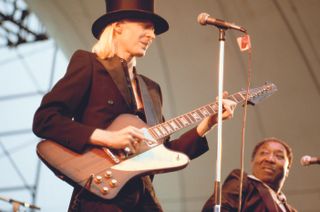
A DREAM COME TRUE: JOHNNY AND MUDDY WATERS
Collaborating on three Grammy-winning albums and going on tour led to a father-and-son relationship and the revival of Waters’ career…
Johnny was 14 when he bought She’s Nineteen Years Old, his first Muddy Waters single. When he began listening to the 1958 Chess album The Best of Muddy Waters, he was both fascinated and perplexed by the sound of Waters’ slide guitar.
“Muddy’s records probably are my favourites,” he said. “Muddy was the first slide guitarist I ever heard. I could tell the guy was fretting the guitar and sliding something. I thought it was a steel guitar until I realised he was fretting it also. It was a mystery to me how you could do both. I was trying to figure out what how it was being done. I had never seen anyone play a slide when I taught myself. I had to listen, learn how he did it, and practice it. I was about 14 when I started playing slide, but I didn’t get real serious until I was about 25.”
Johnny met his hero when he opened for him at the Vulcan Gas Company in Austin on August 2 and 3, 1968. Thrilled to finally meet his musical hero, Johnny brought a camera to the shows and set up a small reel-to-reel tape recorder on the stage to tape Muddy’s performance.
“It was great to open for him – that was the first time I ever saw him live,” said Johnny. “We played every other set. We went on, Muddy went on, we came back and Muddy played the final set. We talked a little after the show and he said he liked my music. We mostly talked about music and he asked me about my National guitar because he had played one, too. We didn’t play together that night. I felt honoured just to meet him because he had been my idol since I was 11 or 12 years old.”
“Johnny was like a kid in a candy store,” recalled bassist Tommy Shannon. “He was right in front of the stage and had his little tape recorder playing on the stage at Muddy’s feet. He was like some groupie type guy you would see at any club, standing right in the front.”
Six years later, Johnny played a TV show that led to a musical collaboration with his childhood idol. PBS Soundstage debuted with a tribute titled Muddy Waters & Friends: Blues Summit in Chicago. Filmed in Chicago on July 18, 1974, the show featured Waters, Mike Bloomfield, Junior Wells, Willie Dixon, Johnny Winter, Koko Taylor, Dr. John, Buddy Miles, Nick Gravenites, Phil Guy, Paul Oscher and Pinetop Perkins.
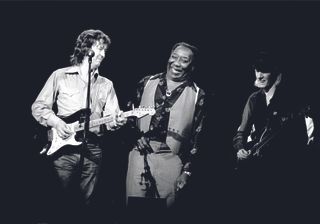
When Waters left the Chess label the following year, his manager Scott Cameron negotiated a record contract with Blue Sky Records with the stipulation that Johnny play on and produce the records. “Muddy spotted Johnny’s ability the very first time Johnny opened for him down in Texas,” said Cameron. “He knew his sincerity and (that Johnny) knew Muddy’s music – that he wasn’t going to come in and try to change Muddy. He was just going to enhance it.”
Johnny called the opportunity to play with and produce his idol “a dream come true”. Waters, who hadn’t been happy with his treatment at Chess, was equally enthusiastic.
“Muddy loved working with Johnny,” said Cameron. “Johnny had a lot of respect for Muddy and treated him that way. He brought out the best in Muddy.”
Johnny chose The Schoolhouse studio in Westport, Connecticut because the acoustics of the 18th-century one-room schoolhouse with two microphones near the ceiling created a room echo that captured the raw sounds of Waters’ early blues recordings. “With overhead microphones, you get the sound of a whole band instead of separate instruments,” said Johnny. “Everything fed through everybody else’s mike. Regular miking ruined the sound of real raw blues. Overdubs ruin the sound of raw blues, and we had enough musicians so we could get it without overdubbing anything except for the vocals.”
Waters learned how to cut a record quickly at Chess Records; Hard Again was recorded in less than a week.
“We’d get in about midday and work till five or six (am),” said Johnny. “Muddy didn’t fuck around between cuts. He knew what he wanted to do and did it. He wouldn’t do a song more than twice. If something didn’t come out right, he expected me to fix it. And I usually could.”
When Johnny joined the Hard Again tour in early 1977, it was a far cry from his previous tour of playing 50,000-seat venues. With Waters’ band he was performing at clubs that held 500 people, but that didn’t faze him in the least. He was playing the music he loved, with a man he loved, and that was all that mattered.
Johnny produced three Grammy-winning albums for Waters: Hard Again (1977), I’m Ready (1978) and Muddy “Mississippi” Waters Live (1979). King Bee (1980) was the only album that didn’t win a Grammy.
In a Guitar Player interview that ran after Waters’ death in April 1983, he whispered, “That’s my son,” to the interviewer when Johnny left the room to get his guitar. It was the ultimate compliment, one that Johnny never heard from Waters’ lips.
“That made me feel great,” Johnny said. “Muddy wasn’t an emotional kind of guy. It was always in interviews where he said it about me to somebody else. Muddy and I had a strong bond because I worked with him – I helped his career a lot. I don’t want to sound conceited, but I did. Muddy’s acknowledgement made me feel like it was something I should be doin’. Made me feel like I could play better than most people doin’ blues.”
“Working with Johnny brought Muddy’s career back to life,” said Cameron. “The reviews of Hard Again were phenomenal and brought Muddy to a much, much wider audience. Without Johnny Winter, I don’t think there would have been a Hard Again, which was the rebirth of Muddy’s career.”

